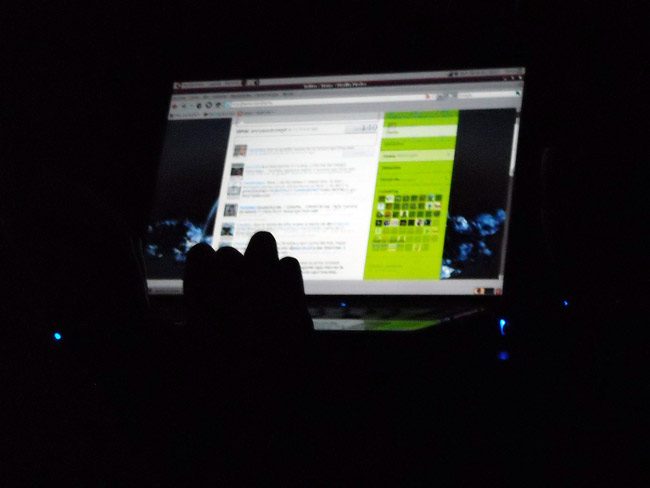
Joshua Wilson, a 16-year-old high school student, had tweeted threat after threat over several days: “can’t WAIT to shoot up my school,” went one, “it’s time,” went another, hat one posted with the image of a gun being placed in a backpack. Then: “school getting shot up on a Tuesday,” and after referring about his last night with an expletive, “can’t wait to shoot up my school soon.” The tweets were not protected. Anyone could read them.
He also tweeted what sounded like he’d been kidding around: “My mom and dad think I’m serious about hooting up my school I’m dying.” Which he was: he would later claim the tweets were just part of a big joke with a “group of friends who often joked about being unfairly stereotyped as potentially violent based on their interest in video games and rock music.” But that would be revealed later.
Wilson attended Sarasota High School. He claimed to someone who messaged him on Twitter that his tweets had been retweeted by “a bunch of people [with] like 40,000 followers.” A West Virginia-based watchdog group called GeoCop (it appears no longer to be active) reported the tweets to local police, who relayed the threats to school officials, who dismissed school soon after receiving the alert, with cops rimmed around the school as a precaution. Police then found Wilson at his home, within blocks of the school, arrested him, and charged him with making a threat and posting it on social media, a second-degree felony.
On Wednesday, the Second District Court of Appeal in Sarasota in Lakeland threw out the conviction.
A three-judge panel ruled unanimously that the Florida law that applies to threats clearly and unambiguously can only be invoked when those threats are made directly at a person or a family member of the sender. The court, the opinion read, can’t add language to the statute. Threats may not be criminalized if they have not actually been sent. Nor may they be criminalized if they do not explicitly target an individual. In this case, Judge Nelly Khouzam wrote for the majority, “there is no evidence that J.A.W. directed the threats to the potential victims aside from merely referencing ‘my school.’ Moreover, the fact that the school received the threat, without more, is insufficient to support a finding that the threat was ‘sent’ under the very limited language” of the law. (Khouzam was appointed to the court in 2008 by then-Gov. Charlie Crist.)
There was no evidence, the judge continued, that any of Wilson’s followers were students or faculty at the school. “By the time it was received by the school, the threat was several steps removed from its original context,” Khouzam wrote. Nor did prosecutors present any evidence showing that the threats were seen by any of Wilson’s classmates or staff at Sarasota High School. The judge contrasted the Wilson case with a 2013 case involving a man who’d made direct threats to “friends” on Facebook whom he’d solicited.
The nine-page judgment, however, included a significant caveat in the form of a suggestion to the Legislature to revisit the law.
The judge called Wilson’s types of threats “a serious problem” in a country where 65 percent of Americans use social media, or 90 percent among people ages 18 to 29. “With this popularity comes the unfortunate but inevitable problem that social media posts, like any other form of communication, can be used to make threats of violence,” the judge wrote. “But many threats made on social media will fall outside the narrow language” of a Florida law originally written in 2013 with pen and paper in mind, and only slightly revised only in 2010 to include “electronic communication.” But the law does not take into account the degree to which social media posts are expected to reach a certain audience, whether intended or not.
“In this context, a threat of violence made publicly on social media is likely to
reach its target and cause fear of bodily harm just like a traditional letter might,” the ruling states. The facts of the instant case exemplify this phenomenon. Accordingly, the legislature may wish to revisit section 836.10 to address the modern problem of threats issued and shared publicly on social media.
The full ruling is below.
![]()
Florida v. J.A.W., the Twitter Threats Case (2016)
Click to access jaw-v-florida.pdf





























Rosie M. says
Too much over thinking by the Judge! The laws of this state and of this country do however need to be reviewed and PERHAPS updated to allow for changes in circumstances caused by the proliferation of “new” electronic media. Even without review, the judges of this country should understand the “broader intent of the law” and understand the implications of ruling by the exact letter of a statute which could cause harm to groups or individuals who are mentioned in the threat. Had more attention been paid to social media, some of the mass shootings in this country possibly could have been avoided even if a judge as in your article let the perpetrator go after being arrested. The people who make threats such as these need to be made known to the public and placed on Federal Terror watch lists so they can be scrutinized and can be prevented from making good on their threats. If it turns out they are only “Joking”, Oh well-lt sucks for them!!!
Sw says
Sounds like a threat to me
Anonymous says
Time for this school to learn what the term “zero tolerance” means, before it is too late.
footballen says
Then many will scratch their heads and wonder how the next tragedy could happen here.
Donald Trump's Tiny Fingers says
I think schools all over the nation have discovered what zero tolerance means already, which is why they’re getting rid of it and using common sense like the judge did in this case.